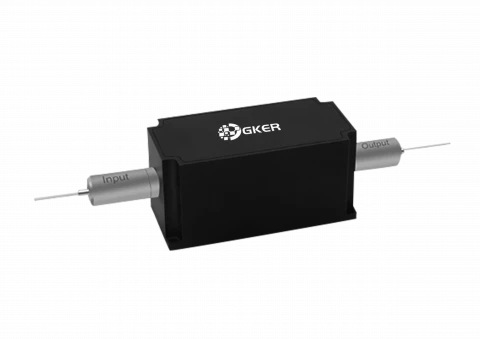Description
Engineered to excel in demanding optical environments, the 1030 nm High Power Polarization Insensitive Isolator represents a breakthrough in optical technology. This isolator is designed to ensure optimal performance in fiber laser and sophisticated instrumentation applications, where high precision and reliability are paramount.
Featuring an exceptionally low insertion loss of just 0.8 dB and a high isolation of up to 30 dB, this isolator maximizes efficiency while minimizing signal degradation. It is equipped to handle substantial power levels — up to 20 watts — accommodating the rigorous demands of high-intensity laser applications. Additionally, the device boasts an impressive return loss of 50/50 dB, ensuring minimal back reflection which is critical for maintaining the integrity and quality of the laser output.
The isolator's polarization insensitivity is particularly advantageous in applications where light polarization can vary, providing consistent performance regardless of polarization state. This feature, combined with its robust environmental stability, ensures reliable operation across a wide temperature range from +10 to +50°C, making it suitable for both industrial and laboratory settings.
1030nm High Power Polarization Insensitive Isolator (HI Series) | Up to 20 W
Specifications
| Type Of The Device: | Isolator |
|---|---|
| Operating Wavelength: | 1030 nm |
| Max Power: | 10 W |
| Min Isolation: | 25 dB |
| Center Wavelength (λc): | 1030 nm |
| Operating Wavelength Range: | λc ± 10 nm |
| Min. Isolation, λc, 23 ℃, All Polarization States: | 25 dB |
| Max. Average Optical Power: | 10/20 W |
| Max. Peak Power For Ns Pulse: | 10 kW |
Features
- Low Insertion Loss (0.8 dB Typical): Minimizes power loss during transmission, ensuring efficient use of the laser's output.
- High Isolation (Up to 30 dB): Effectively blocks unwanted back reflections and noise, enhancing the purity of the laser signal.
- High Power Handling (Up to 20 W): Capable of managing substantial power levels, suitable for high-power applications.
- High Return Loss (50/50 dB): Reduces signal leakage back into the laser source, protecting the source and improving system performance.
- Polarization Insensitivity: Maintains consistent performance across all polarization states, crucial for applications requiring uniform optical properties.
- Environmental Stability and Reliability: Operates reliably over a wide temperature range (+10 to +50 °C), ensuring performance stability in varied environmental conditions.
- Customizable Configuration: Offers flexibility in terms of handling power, fiber type, connector options, and power types to meet specific requirements.
Applications
- Fiber Laser Systems: Ideal for high-power fiber lasers used in manufacturing and materials processing, where stable and reliable laser output is critical.
- Telecommunications: Enhances fiber optic communications systems by ensuring stable signal integrity and reducing polarization-related signal degradation, crucial for long-distance data transmission.
- Medical Instrumentation: Supports medical laser systems used in surgeries and diagnostics, where consistent and reliable laser performance is necessary for precise and safe operations.
- Optical Sensing: Utilized in sensors that rely on lasers for measuring physical properties or changes in environments, where the stability of the laser signal is vital for accurate measurements.
- Scientific Research: Provides a stable platform for experiments involving lasers in physics and chemistry labs, where precise control over laser properties is necessary.
- Industrial Metrology: Used in precision measurement equipment that requires high stability and reliability in laser performance for accurate industrial measurements.
- Aerospace and Defense: Supports applications requiring high-power lasers for navigation, targeting, and communication systems, where performance cannot be compromised.
Frequently Asked Questions
What is a 1030 nm High Power Polarization Insensitive Isolator?
How does the 1030 nm Isolator enhance fiber laser systems?
Why is the 1030 nm Isolator important for telecommunications?
Can the 1030 nm Isolator handle different power levels?
What are the key features of the 1030 nm Isolator?
Where is the 1030 nm High Power Isolator typically used?
What does high return loss mean in the context of the 1030 nm Isolator?
How does the isolator’s environmental stability benefit its applications?
What customization options are available for the 1030 nm Isolator?
Similar Products


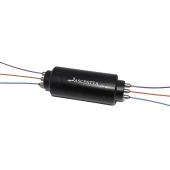



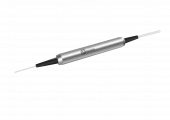
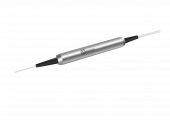
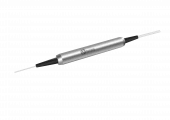
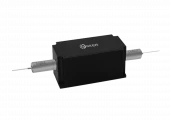
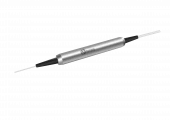
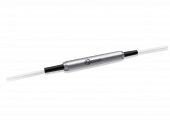
Your inquiry has been received.
Create an account by adding a password
Why create an account?
- Auto-complete inquiry forms
- View and manage all your past messages
- Save products to your favorites
- Close your account anytime — no hassle
